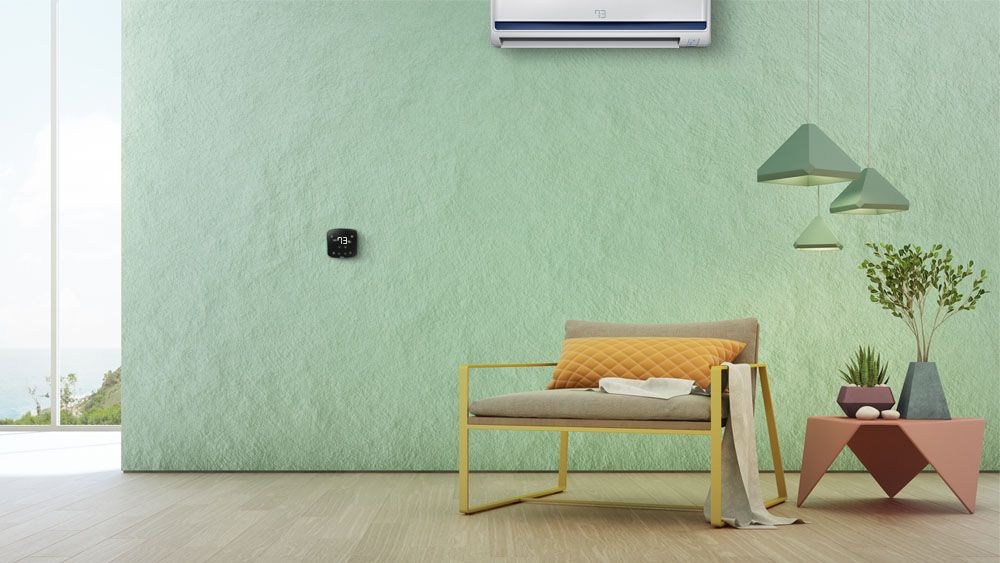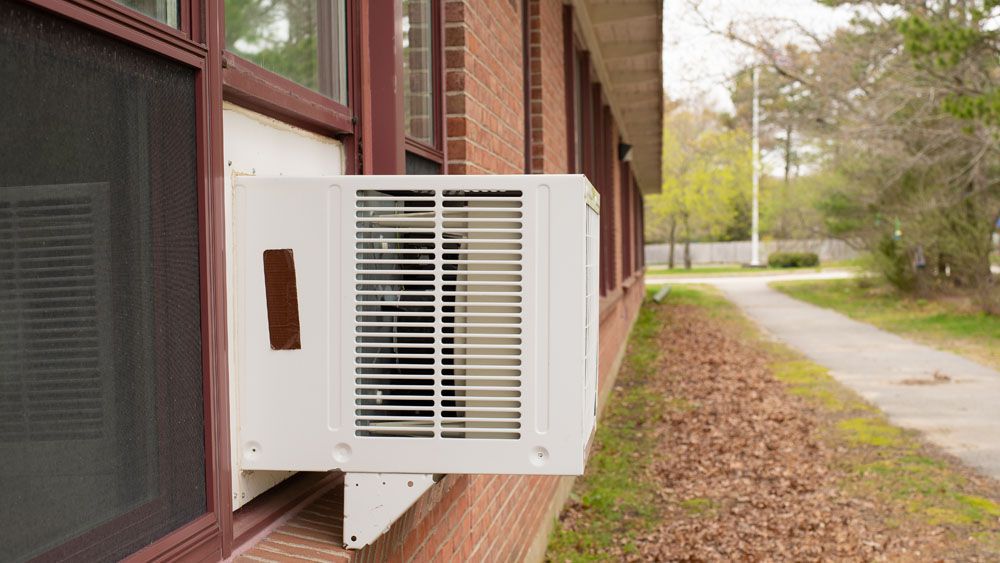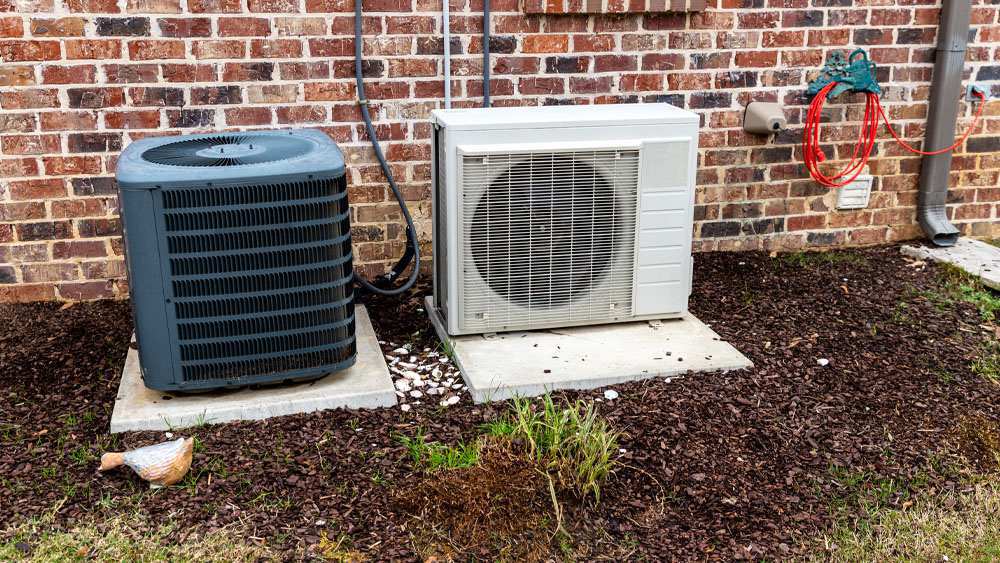
Key Takeaways
- A split system HVAC consists of an indoor unit (evaporator) and an outdoor unit (condenser).
- Central split systems are ideal for whole-home cooling but require ductwork.
- Mini-split systems offer high efficiency, no ductwork, and room-by-room temperature control.
Air conditioning has now become an integral part of almost all American homes. The Department of Energy states that around three-quarters of all US homes have air conditioning installed. The increasing numbers are comprehensible and make a lot of sense. In this day and age, technology has provided us voluminous means through which we can stay comfortable throughout the day without even breaking a sweat, and air conditioning is one of them.
But, with so many different types of air conditioners available, it can get confusing to choose the best fit for you. This article will explain what split system HVAC units are and how they differ from packaged units to help you get to a final decision.
What Is a Split System HVAC Unit?
Split system HVACs are one of the most common types of air conditioners. As opposed to a packaged HVAC system, a split system HVAC unit is divided into two parts. One part responsible for cooling your room is called the evaporator, while the other used to eject the heat outside is called the condenser.
The evaporator, commonly known as the indoor unit, is placed inside your home, while the condenser or outdoor unit is placed outside your home.
Let’s have a more detailed look into split system air conditioners and know more about them.
HVAC Packaged Unit vs. Split System

To begin the comparison, let’s first get to know about some parts of an air conditioner.
- Compressor
Compressor is a component that compresses refrigerant and turns it into a high-pressure liquid. Refrigerant is a cooling agent and it is a medium through which air conditioner heats and cools.
- Evaporator
Evaporator is the part from where the cool air comes from in an AC. Refrigerant runs through evaporator coils absorbing the heat in your room, thus lowering your room temperature.
- Condenser
Condenser is where refrigerant ejects the excessive heat. A fan blowing outside air over your AC’s condenser cools condenser coils down, which have refrigerant running through them.
Your best choice to make any mini-split, window,
or portable AC smart. Enhance your comfort and savings.

Packaged HVAC System
As might be evident from the name, a packaged system HVAC comes in one whole package. A common example of a packaged system HVAC is that of a window or through-the-wall air conditioners.
In a packaged HVAC system, all the components mentioned above and other associated pipeworks are located in one unit.
In the case of a window AC, for example, it would be like a small box. Every component required to run the air conditioner is in one package, and you only need to plug in the power cord to get it running.
Split HVAC System
In a split system HVAC unit, the components are divided into two parts, indoor and outdoor units.
The indoor unit is placed inside your home and introduces cool air into your room. This is also known as an evaporator since the evaporator coils are situated within the indoor unit.
The other half is the outdoor unit, also named a condenser. The compressor, condenser coils, condenser fan, and electronic equipment are housed in the outdoor unit. It is placed outside your home, right opposite the indoor unit.
The indoor unit takes in the warm air from your room, cools it down, and then sends it back to your room. This process heats up the refrigerant. The refrigerant is then sent to the condenser/outdoor unit, where it is cooled down, and the excess heat is ejected into the outside air. This is why you often feel hot air coming out of the outdoor unit of your air conditioner. The part from where the heat is coming from is the condenser.
You can connect the two units by a slim bundle of pipes and wires. The pipes carry the refrigerant from the outdoor unit to the indoor unit, and the wires provide electricity.
Read this article to learn more about the working of an air conditioner.
Types of Split System HVAC Units

Split system air conditioners are further divided into categories with varying designs, usage, and sizes. Let’s take a look at them.
Mini-Split AC System
A mini-split AC system is the most common type of split air conditioner. The indoor unit in a mini-split is usually located high up on the wall with the help of brackets and is designed to be very sleek and fashionable. A small pipe bundle is connected to the outdoor unit, often located right opposite the indoor unit, through a hole in the wall.
Don’t worry, though; you cannot see this hole! You can hide it behind your indoor unit and it doesn’t ruin your room’s aesthetics.
Ductless mini-split AC systems are fast rising in popularity due to their high efficiency and lack of ductwork required. They come in various types, including single-zone, multi-zone, wall-mounted, floor-mounted, ceiling cassette, concealed duct, and smart mini-split.
Floor-Standing Split Unit
These split systems are tall standing units and are larger than a mini-split. They look quite similar to a refrigerator in appearance and you can place them anywhere. There is no need for mounting brackets, just connect the indoor and outdoor units, plug in the power cord, and you are good to go.
This type of system is very popular for use in lobby areas, large halls, corridors, conference rooms, and well-trodden areas due to their high cooling capacity.
Central Split System HVAC
If you have a split system HVAC at home and it isn’t a mini-split, it is probably a central split system AC. The indoor unit, in this case, is located in the basement or pantry and consists of an air handler unit and evaporator. The outdoor unit is placed outside and out of sight.
The air handler pushes out cooled air throughout your home, thanks to a system of ducts. These ducts go to each area of your house, much like a maze network, and provide cool air. You can control the amount of air coming into each room through vents using thermostats.
This sort of system is also called a ducted air conditioning system due to the use of ducts to cool the home.
Check out this article to find out the difference between ducted and ductless air conditioning systems in detail.
Advantages of Split System HVAC Unit
Split system HVAC units are becoming increasingly popular because of the benefits they offer. Let’s take a look at some of its advantages:
- Higher Efficiency – On average, a split system HVAC would have a higher SEER rating than a packaged unit, especially for larger full home systems.
- Personalization – With the air conditioner being split into two parts, you have greater flexibility with where you want to place the system and can better fit it according to the space available.
- Reduced maintenance – If you opt for a ductless mini-split AC system, there will be no ductwork to take care of. This means less installation and maintenance costs.
Choosing the Right Type of Split System HVAC
There are many types of split HVAC systems, and it can be quite a task to get the right one for your needs. Let’s see some factors that can influence your decision.
1. Home Construction
If you are building a new home and have ample space inside, then a central split HVAC system might suffice. The ductwork can be routed through the ceiling space, making you enjoy a centrally conditioned home. If you are going for a renovation, then a mini-split AC system should be your go-to choice. They do not need any ductwork, there is no lengthy installation process, and they will not alter the shape of your indoor space.
2. Efficiency
In general, mini-split AC systems are more efficient than their ducted counterparts. With higher SEER ratings, mini-split systems are sure to bring your energy bills down.
3. Personalized Cooling
A ducted HVAC system provides cooling for your whole home. In most cases, you cannot control individual room temperatures. This results in a waste of cooling energy. Moreover, in rooms where the temperature is already low, further cooling will only make your indoor environment uncomfortable. Mini-split AC systems allow you to control the temperature of each room individually. This way, you can achieve personalized cooling for each room. You can use smart AC controllers with your mini-splits to make your ACs smart and create zones to enhance comfort.
4. Budget
As mentioned before, a ducted system has more costs associated with it due to ductwork and increased contractor costs. For this reason, it is wise to go for mini-split systems if the total area of your room to be cooled is not large enough, and you are on a budget. If you want to cool down an office building, then a central split HVAC system would be a better financial choice.
Now that you have a good idea about split system HVAC, you can better decide on your air conditioning needs and get the best system for your home!









1 Comment. Leave new
Can the evaporator unit explode? If it so then what are the reasons and their remedies?